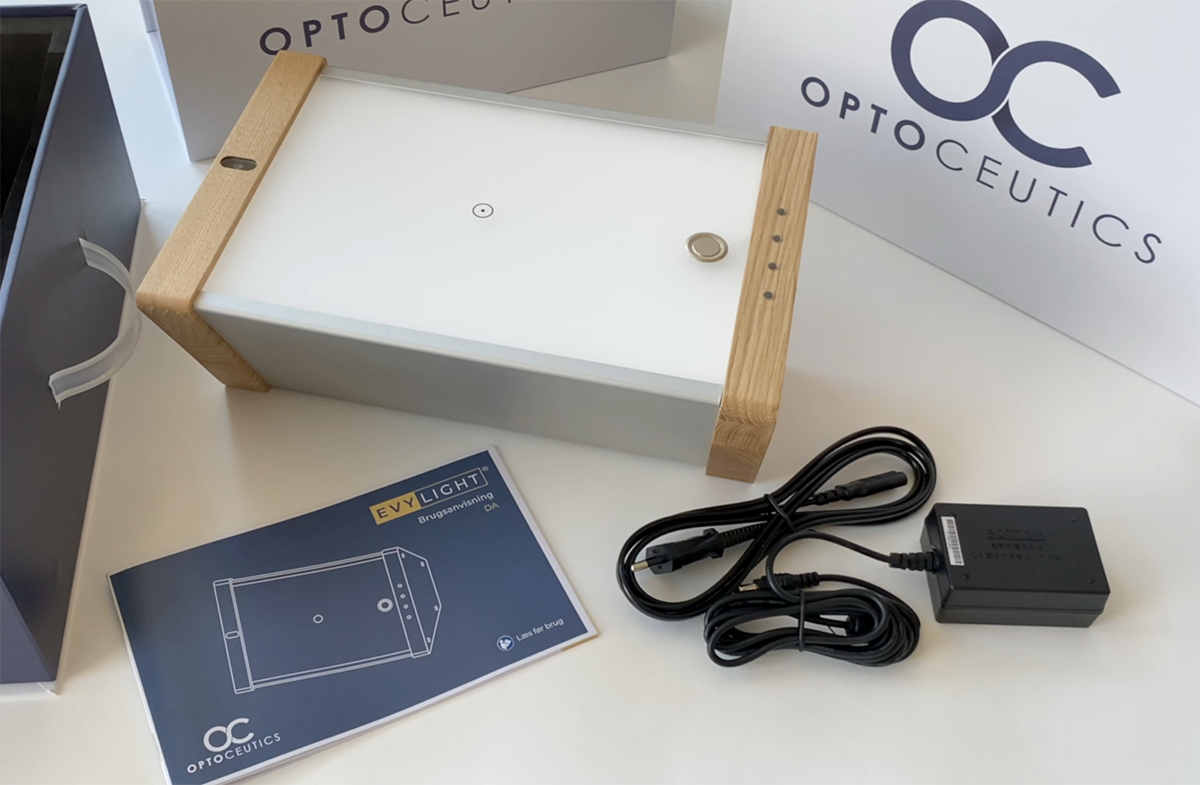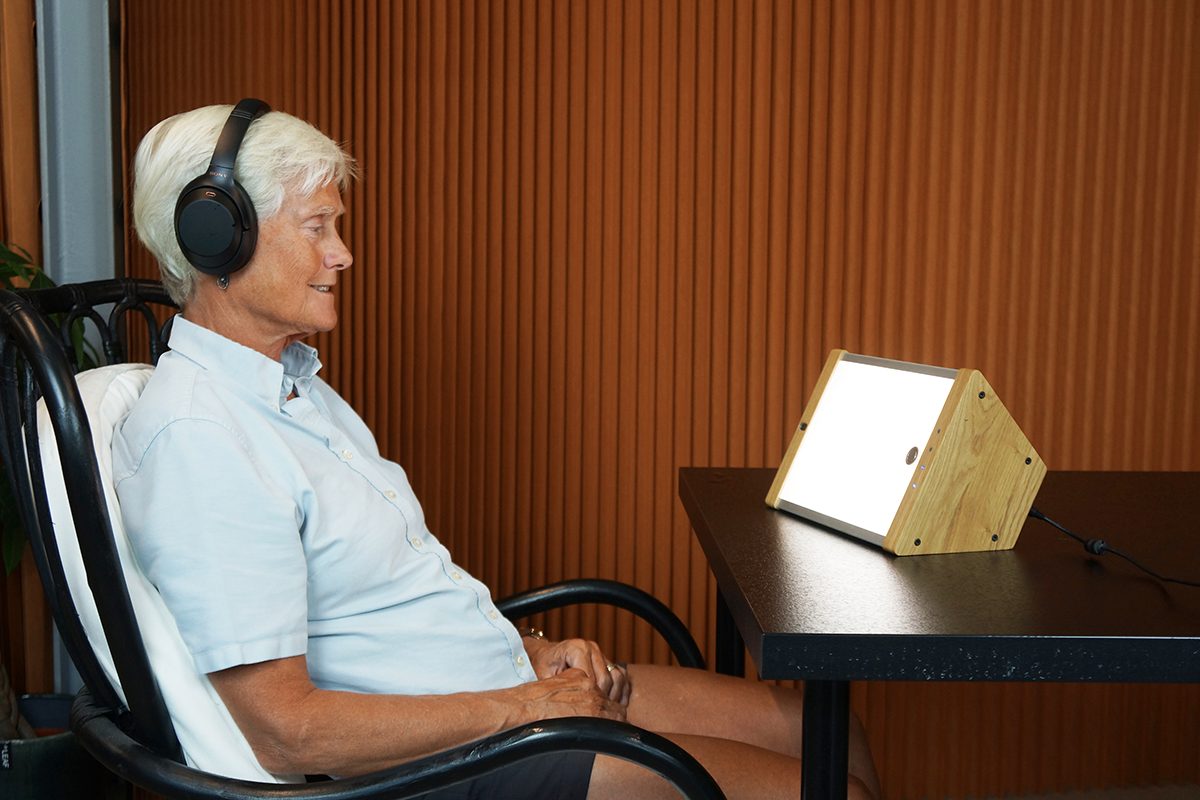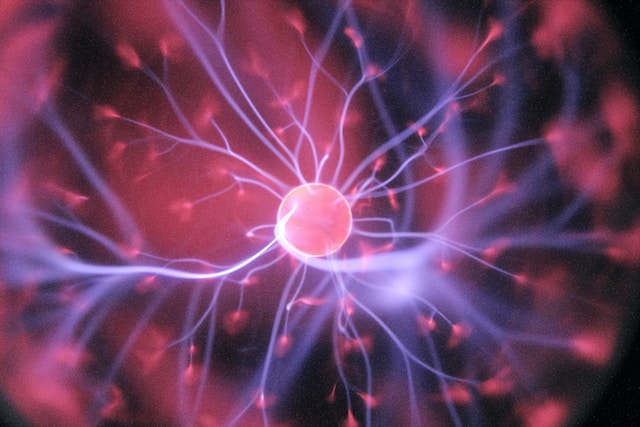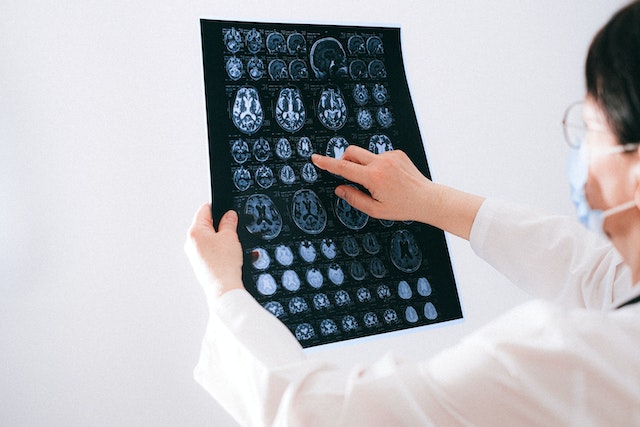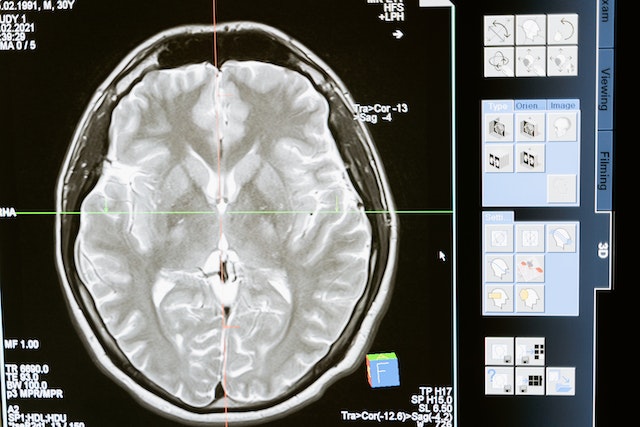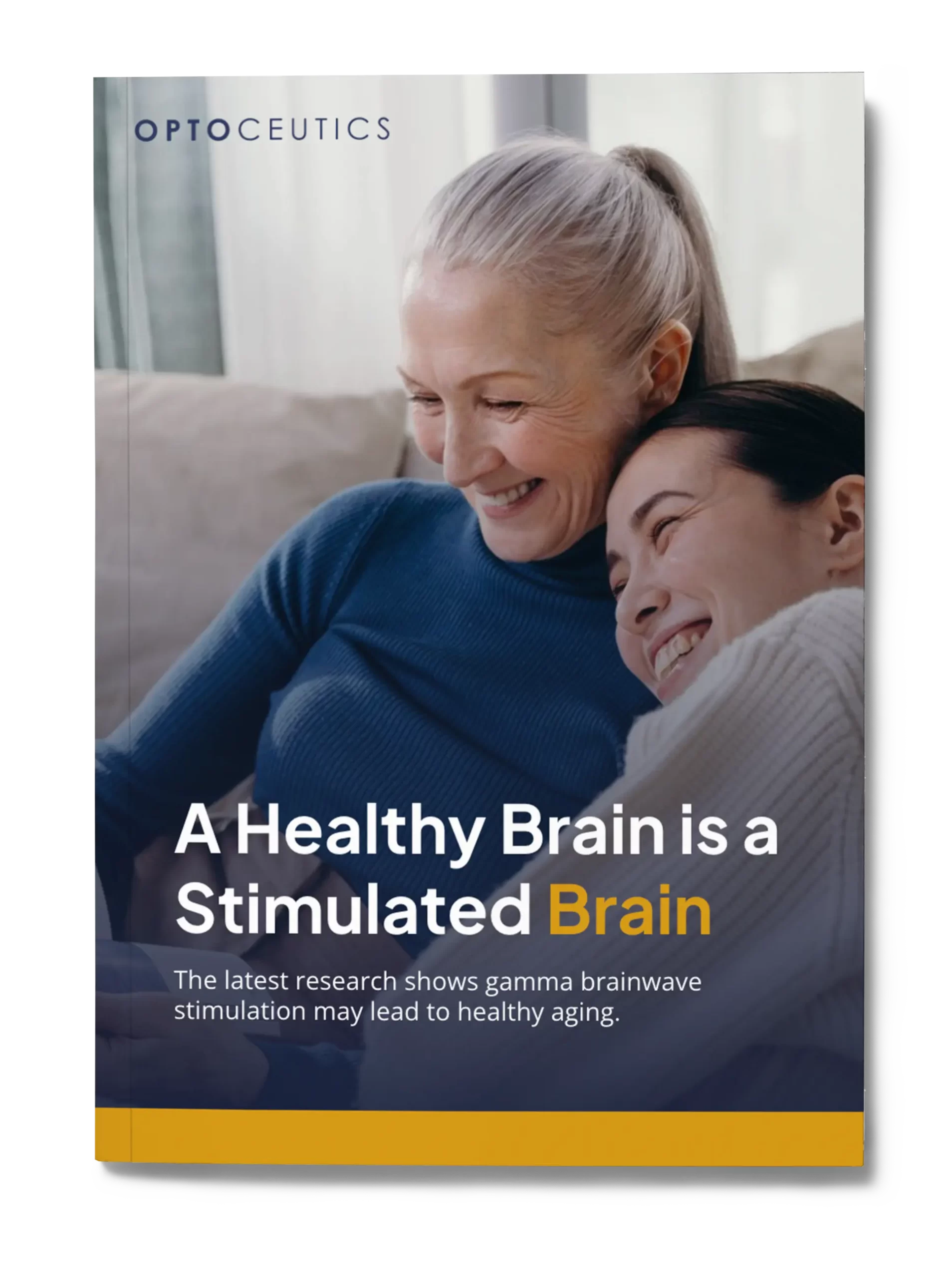Alzheimer’s Disease and dementia disease are neurodegenerative conditions that drastically impact the memory and cognition of those affected. Although there is no cure, researchers are constantly looking for ways to treat these conditions to lessen their symptoms. Recently, blue light therapy treatment has been explored as a viable treatment for conditions such as Alzheimer’s disease and dementia.
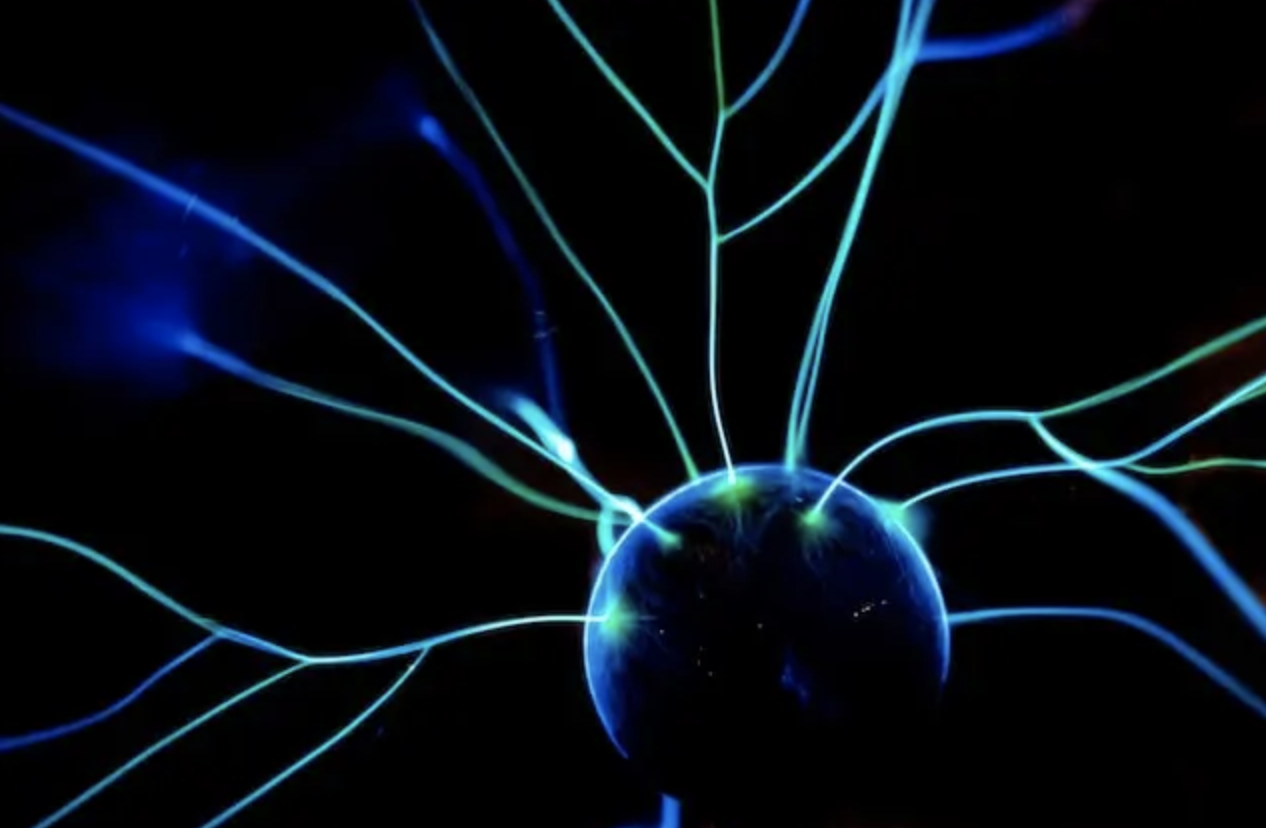
Christopher Ravn
Key Takeaways
1. Alzheimer’s disease and dementia are neurodegenerative conditions that affect brain functions like memory, sleep regulation and mood.
2. Although there isn’t a known cure, blue light therapy could work as a viable treatment for these conditions.
3. Using a device such as EVY LIGHT can adjust the brain waves in people with Alzheimer’s disease and dementia, potentially helping to lessen the symptoms associated with these conditions.
Table of Contents
1. What Is Blue Light Therapy For Alzheimer’s And Dementia?
2. How Does The Blue Color In The Light Help With Alzheimer’s And Dementia?
3. What Does a Blue Light Therapy Session Look Like?
4. The Latest Research Into Blue Light Therapy Treatments For Alzheimer’s And Dementia Patients
5. How Does Blue Light Therapy Impact Brain Function in Alzheimer’s And Dementia Patients?
6. What Is The Best Type Of Blue Light Therapy For Alzheimer’s & Dementia?
7. What Is The Best Device To Use With Blue Light Therapy For Alzheimer’s And Dementia?
8. How Much Does Blue Light Therapy For Alzheimer’s And Dementia Cost?
9. Are There Any Situations Where Blue Light Therapy is Risky?
10. Frequently Asked Questions About Blue Light Therapy For Alzheimer’s And Dementia
What Is Blue Light Therapy For Alzheimer’s And Dementia?
Blue light therapy is a specific type of light therapy treatment. It works by exposing patients to pulses of light set to a certain wavelength, which appears to alter brain functionality in a positive way. For people afflicted with Alzheimer’s disease and dementia, this form of treatment can help with many of their symptoms, including memory loss and sleep disruption. Blue light therapy treatment for Alzheimer’s or dementia also looks to mimic natural sunlight, which in turn affects the circadian system.

Benefits Of Blue Light Therapy In Alzheimer’s And Dementia Patients
Blue light therapy offers people with Alzheimer’s disease and dementia a number of potential benefits. This form of treatment looks to adjust the circadian rhythm in our brains, which is disrupted if you have Alzheimer’s disease or dementia. So by changing the circadian rhythm to a more natural state through blue light therapy, Alzheimer’s most prominent symptoms are lessened. Some key areas where this type of therapy can help include:
- Improved sleep patterns.
- Reduced nighttime wandering.
- Improved memory and cognition.
- More stable mood patterns.
Can Blue Light Therapy Help With Alzheimer’s And Dementia?
Although research into blue therapy as a viable treatment for Alzheimer’s disease and dementia is relatively new, available studies paint a promising picture. The evidence appears to show that blue light therapy can help improve the cognitive abilities of people suffering from the effects of Alzheimer’s disease or dementia. It is also believed to help realign the circadian system, which helps with sleep disruption and mood disturbances.
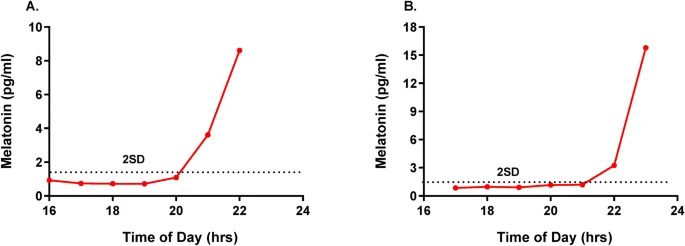
Other Treatments Vs Blue Light Therapy For Alzheimer’s
Alzheimer’s disease and dementia are difficult conditions to deal with due to their progressive nature. Most of the treatments used to combat this disease focus on lessening the symptoms or slowing the disease’s progression. The most common route is prescribing medication such as donepezil or rivastigmine, but these only offer marginal improvements and have limited scope.
In stark contrast to the traditional treatment options is blue light therapy, dementia and Alzheimer’s possible treatment. It offers a non-invasive, drug-free alternative. The studies available outline that blue light therapy treatment is a safe procedure with no significant side effects for patients. This makes it an ideal solution that can work on its own or as part of a complementary treatment plan.
How Does The Blue Color In The Light Help With Alzheimer’s And Dementia?
Blue light therapy treatment appears to work by interacting with the brain waves of people with Alzheimer’s disease and dementia. By mimicking natural sunlight, the bright blue light used in treatment can reset the circadian system in patients and help with sleep disruption issues.
The clinical studies and trials that have used blue light therapy have utilized LED lights to accurately set the color spectrum of light. In doing so, many of the participants who suffer from Alzheimer’s disease were noted as having some notable improvements in their symptoms. For example, their sleep patterns became less disturbed and their mood was enhanced.
Small Studies And Their Findings
As much of the research around blue light therapy treatment for Alzheimer’s and dementia is quite new, there are only small studies and clinical trials available at the moment. Of these, the most promising results stem from the Massachusetts Institute of Technology (MIT). This small clinical study focused on using blue light therapy treatment as a way to alter the disrupted gamma waves in participants with Alzheimer’s disease. Their findings were very promising and showed that the therapy could potentially help preserve neural connections, slow cell death and lower the number of amyloid proteins in the brain.
Another major finding from this research was that this form of treatment was safe. Participants didn’t report any significant side effects and there were no negative interactions between the treatment and other medication. This could potentially pave the way for this type of therapy to work well alongside other treatment options or on its own.
Blue Light Therapy Mechanisms And Cellular Effects
Blue light therapy appears to work in a few different ways. The blue light used mimics natural sunlight, which helps realign the brain’s circadian system with the natural waking hours. This can help alleviate problems with sleep disruption in Alzheimer’s patients.
The other area where light therapy works is by using the 40 Hz frequency to adjust gamma brain waves, which helps manage some of the other symptoms associated with the condition. This side of the treatment can help in a number of ways, such as:
- More Mitochondria: Mitochondrial cells are the battery cells of our bodies. Blue light therapy appears to activate more of these cells in the brain, providing more energy to key processes like memory function.
- Reactive Oxygen Species (ROS) Modulation: ROS modulation is the process of growing healthy brain cells. Blue light therapy treatment improves this process which helps grow new brain cells.
- Neuroprotection: Neuroprotection helps to strengthen the neural pathways in the brain. Blue light therapy looks to enhance this process, which slows the progress of Alzheimer’s disease and dementia.
What Does a Blue Light Therapy Session Look Like?
A blue light therapy session is a simple treatment that doesn’t require any advanced knowledge. All you need to do is let the light from the light therapy lamp shine over you. The ease of use is one of the most compelling benefits of this treatment, as it is so accessible. You can set up the lamp at home or in a clinical setting, such as a hospital room or care facility. The session itself is also really easy and is completely non-invasive. Here’s how it typically works:
- Setting Up the Session: To start the session, position your light therapy lamp on a flat surface and position it around 2 feet away.
- Get Comfortable: Next, find a comfortable sitting or lying position and turn on the lamp. Make sure that the light is being cast on you.
- Daily Schedule: Use it as part of a daily schedule to get the most benefits out of the blue light therapy session.
- No Interaction Required: During the session, you don’t have to do anything other than let the light shine on you. You can read a book, watch television or talk with someone during the session.
What Is The Best Device To Use With Blue Light Therapy For Alzheimer’s And Dementia?
The key characteristic of blue light therapy devices that appears to help with the symptoms of Alzheimer’s and dementia is the 40 Hz light frequency. So when it comes to finding the best device to use for this type of treatment, look out for a kit that can provide this frequency. A good example of an at-home device that can do this is the EVY LIGHT from Optoceutics. This option allows you to undertake blue light therapy at home and it’s affordable, too.
The Latest Research Into Blue Light Therapy Treatments For Alzheimer’s And Dementia Patients
The most promising work that stemmed from MIT researchers was forced to stop early due to the pandemic, although work will pick back up shortly. Their aim is to expand the scope of work while also reinforcing the evidence they have already found. So moving forward, they will be working with high-risk Alzheimer’s patients, as well as branching out to other conditions such as Parkinson’s disease. There is plenty of ongoing research from other ongoing studies that are adding to the existing work. This includes the significant findings from OptoCeutics researchers.
Most of the research surrounding blue light therapy treatment has been small-scale and short-term. So, the body of research is really crying out for long-term studies. Thankfully, the National Institute for Health has already started a long-term study into this treatment. So in a few years, there will be a much healthier body of evidence to support the viability of these treatments.
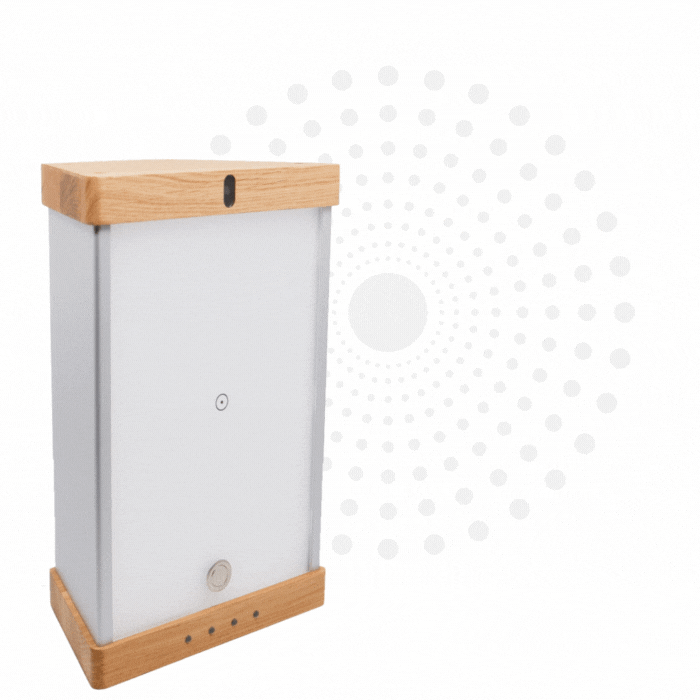
Enhance your brain performance through the power of light.
Comfortable and easy to use 40Hz light therapy to support and improve your brain function.
View Our LightHow Does Blue Light Therapy Impact Brain Function in Alzheimer’s And Dementia Patients?
Blue light therapy treatment appears to help with the symptoms of Alzheimer’s disease and dementia by positively affecting several brain functions that are dysfunctional. Some of the key areas reported to be improved by this treatment include:
- Mood: Blue light therapy appears to help with mood stabilization by mimicking natural sunlight and adjusting gamma brain wave frequencies.
- Amyloid Plaque Buildup: Amyloid plaque buildup is a sign of advanced Alzheimer’s and dementia. According to the amyloid hypothesis, this buildup could cause many of the symptoms in these patients. Light therapy may help lower the number of Amyloid plaques in the brain.
- Neuroprotection: Blue light therapy looks to promote neuroprotection in brain cells, keeping them healthier for longer.
- Memory: Memory is one of the most notable areas affected by Alzheimer’s disease and dementia. Blue light therapy appears to counter this by encouraging memory improvements.
Effect Of Blue Light Therapy On Disturbed Behaviors
Alzheimer’s disease and dementia are conditions where the symptoms get worse over time. As these diseases progress, a number of behavioral changes may occur. This ranges from things like mood swings to problems maintaining a sleep pattern. It appears as though blue light therapy treatment can help manage these symptoms and, in some cases, improve them.
By synchronizing the brain waves of those afflicted with Alzheimer’s disease or dementia, blue light therapy can potentially improve sleep patterns, leading to enhanced mood and a better quality of life. Even better, it looks as if this treatment might also help with things like memory retention, too.
The Circadian System In Alzheimer’s And Dementia Disease
Alzheimer’s disease and dementia directly affect how our circadian system functions. This is a problem because our circadian system is responsible for sleep regulation. When it isn’t working correctly, sleep disruptions occur and your internal body clock is kicked out of balance. This is a common symptom for people with Alzheimer’s and dementia, and it leads to other problems like mood swings.
Blue light therapy appears to help with this issue by correcting the dysfunction in circadian systems. By fixing this problem, people with Alzheimer’s disease and dementia enjoy better sleep regulation, enhanced mood and an overall boost in quality of life.
What Is The Best Type Of Blue Light Therapy For Alzheimer’s & Dementia?
When it comes to finding the best type of blue light therapy for Alzheimer’s and dementia, you’ll want to ensure it can meet the requirements of the treatment. This could be a problem because many light devices exist to treat things like seasonal affective disorder but not Alzheimer’s or dementia.
So you’ll want to make sure that your light therapy device is fit for purpose, meaning it can create a light frequency of 40 Hz. It should also be safe to use and not be too dim or too bright. The devices that are designed for this treatment typically provide light intensity levels between 2,500 and 10,000 lux.

We Believe Prioritizing Brain Health Enhances Your Quality Of Life
Get to know our team, our mission and how our EVY LIGHT® can provide you and your loved ones with a fuller life, letting you breathe a little easier.
What Is The Best Device To Use With Blue Light Therapy For Alzheimer’s And Dementia?
Due to the possible risk of choosing a device that isn’t suited for blue light therapy treatment, it’s important that you find an appropriate option. Look for products that are specifically designed with this treatment in mind, such as the EVY LIGHT from Optoceutics. This will give you peace of mind that the treatment is safe, effective and designed to provide the results you want.
How Much Does Blue Light Therapy For Alzheimer’s And Dementia Cost?
The cost associated with blue light therapy treatment will vary depending on where you receive treatment. Some hospitals will provide this form of therapy as part of their Alzheimer’s or dementia care plan, but it isn’t a guarantee. Also, you’ll have to make sure you have health insurance that covers this treatment – otherwise, it will get very expensive.
Alternatively, you can save a good amount of money by purchasing an at-home device such as the EVY LIGHT. This works in the same manner as the hospital equipment, but you can use it at home and it’s very affordable.
View The Video Testimonials Of What Others Have Experienced
See how others have achieved a sharper mind by activating their gamma brainwaves in combination with maintaining a healthy lifestyle.
Are There Any Situations Where Blue Light Therapy is Risky?
Based on the research on blue light therapy treatment, it appears as though it is safe and doesn’t come with any serious side effects. With that said, there will always be potential conditions that don’t interact well with this type of treatment. So if you suffer from any of the following, please speak to a medical professional before using blue light therapy:
- Light sensitivity issues including migraines.
- Behavioral conditions like bipolar disorder.
- Issues with your skin such as dermatitis.
- Problems with your eyesight or retinal disease.
Frequently Asked Questions About Blue Light Therapy For Alzheimer’s And Dementia
What Is The Best Blue Light Therapy For Alzheimer’s?
The best type of blue light therapy treatment for Alzheimer’s is one that focuses on using the 40 Hz light frequency. It should also be designed with this form of therapy in mind – so avoid devices that are for seasonal affective disorder.
What Is The Best Blue Light Therapy For Dementia?
If you’re looking to find the best blue light therapy device for dementia, then look out for devices designed for this form of treatment. Just like treatment options for Alzheimer’s disease, the lamps used for this therapy use the 40 Hz light frequency to interact with brain waves. So look for devices such as the EVY LIGHT that can offer this functionality.


